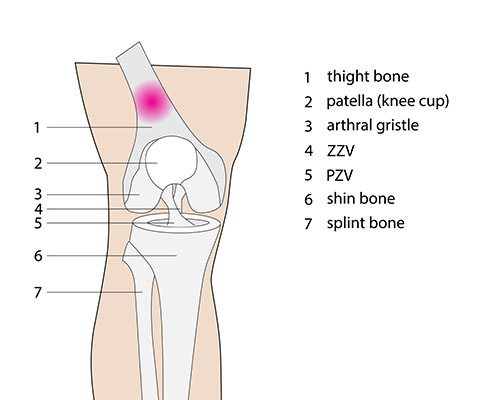At Star Physio, we’re proud to have two members of staff who have received Doctorates for their research into tendinopathy. Doctors James Debenham and Merv Travers have published research in Achilles Tendinopathy in the Journal of Science and Medicine in Sport.
We run regular in-house education seminars to make sure all of our physiotherapists are up to date with the latest research and methods of treating tendonitis. Having two experts in lower limb tendinopathy on the team means we’re all familiar with the right ways to treat and manage this condition.
What is Tendonitis?
Tendonitis (sometimes spelled tendinitis) is the name given to inflammation and irritation around a tendon. It can occur in any tendon in the body, though it’s most common in the Achilles tendon (Achilles tendonitis), the lateral knee (ITB Syndrome), the elbow (tennis elbow) and the lower knee (jumper’s knee). Tendonitis manifests as pain around the joint and can be identified by:
- Pain or tenderness around the tendon, especially when pressed
- Decreased strength in the affected area
- A grating sensation when moving the joint
- Pain when stretching
- Pain or stiffness in surrounding muscles
What’s the Right Way to Treat Tendonitis?
Tendonitis can be treated and managed with help from your physiotherapist. They will conduct a thorough assessment to determine the severity of your condition, identify the contributing factors and work with you to develop a treatment plan. Tendonitis is generally categorised in one of two classes: you can have “grotty” tendon pain that goes on over a long period of time and is manageable, or “acute” tendon pain that flares up when you perform particular tasks or activities. As Dr James explains in his video seminar on tendinopathy, the way these two types of tendonitis are treated can be completely different. Some methods your physiotherapist might use include:
- Teaching you rehabilitation and conditioning exercises (including clinical Pilates) to gradually increase muscle strength and stretches/flexibility
- Ice or heat treatment
- Taping or bracing
- Gentle soft tissue massage
- Suggesting orthotics
- Dry needling (acupuncture)
- Suggesting anti-inflammatories
For both grotty and acute tendon pain, we highly recommend doing isometric loading exercises. To do isometric loading exercises for the commonly injured Achilles tendon:
- Stand back on the edge of a step with your heels at the same level as your toes
- Lift one leg and hold for ten seconds
- Repeat ten times
- Repeat on other leg
In addition to treating the pain and strengthening the muscles, your training will need to be moderated. Speak to your physiotherapist, your coach and use your own common sense to moderate your training to a safe, comfortable level for your affected tendon.
Self-treatment should never replace a thorough examination from your physiotherapist, so be sure to make an appointment by calling us on 08 9481 1003 or fill out our quick online form with any queries you have about tendonitis. For more information about tendon pain in the knee, listen to our directors explain ITB Syndrome in this short video.

